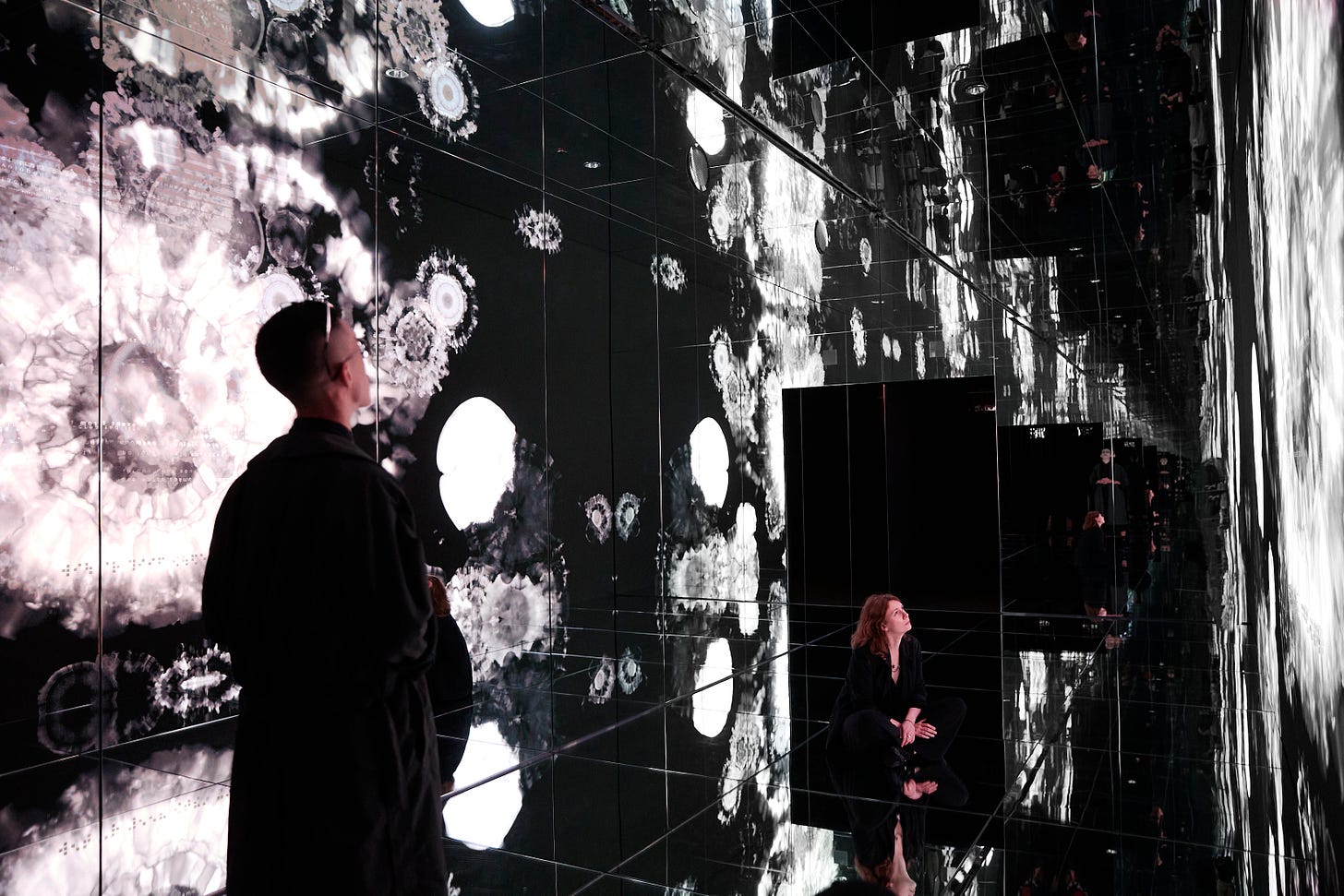First Learnings From Tribeca Immersive 2024
The exhibition at Mercer Labs is far from over, yet with over 1,000 viewers coming in daily, the number of new learnings and observations is already significant
The 2024 edition of Tribeca Immersive in partnership with Mercer Labs is still on view at 21 Dey Street until July 29, so if you’re in town don't miss your chance to experience this special show created with Memo Akten & Katie Peyton Hofstadter, Liam Young, ScanLAB Projects, Wen-Yee Hsieh, Sutu, Robertina Šebjanič & MONOM. The exhibition consists of eight exclusive large-scale visual and sonic artworks rotating in three chapters. Each piece represents a distinct style, originating from a life-long practice of artists whose expertise spans architecture, film, animation, sculpture, theater, dance, music, and audio.
Here are some of the initial insights from this year's edition, followed by questions I’d like to focus on further as we observe an ongoing shift towards various models of immersive art and entertainment experiences. If the momentum continues, this may be the beginning of a larger cultural evolution in how we connect with experiential stories and world-like digital exhibitions.
How We Approached This Year
A lot of how the final programming at Mercer Labs came together was a result of three stars aligning: the fit for the curatorial direction of the show (I wrote about it a little bit here); the creative and production independence of the artist (we had three months to produce); and the artist's ability to collaborate with the venue within the architectural and technical parameters of the space.
Since all the works were created or adapted specifically for Mercer Labs, it required a fair amount of flexibility and the ability to work quickly with a profound understanding of the benefits and challenges of atypical exhibition spaces like an 8K infinity room, or a 5-wall LED immersive space that can accommodate hundreds of viewers every hour. It was also crucial to understand that we create for a space that pretends to be a purely audiovisual canvas but actually behaves like a piece of living architecture, incorporating elements of live theatre reminiscent to some extent of the Sleep No More audience journey.
We knew that if we teamed up with artists with extensive technological experience and a cross-disciplinary creative DNA, and relied on the talent and artistic confidence of directors that we knew could work in a 3D environment without even seeing it, our chances of success would increase. It seems that strategy paid off.
Keep reading with a 7-day free trial
Subscribe to Ana’s Notes to keep reading this post and get 7 days of free access to the full post archives.




